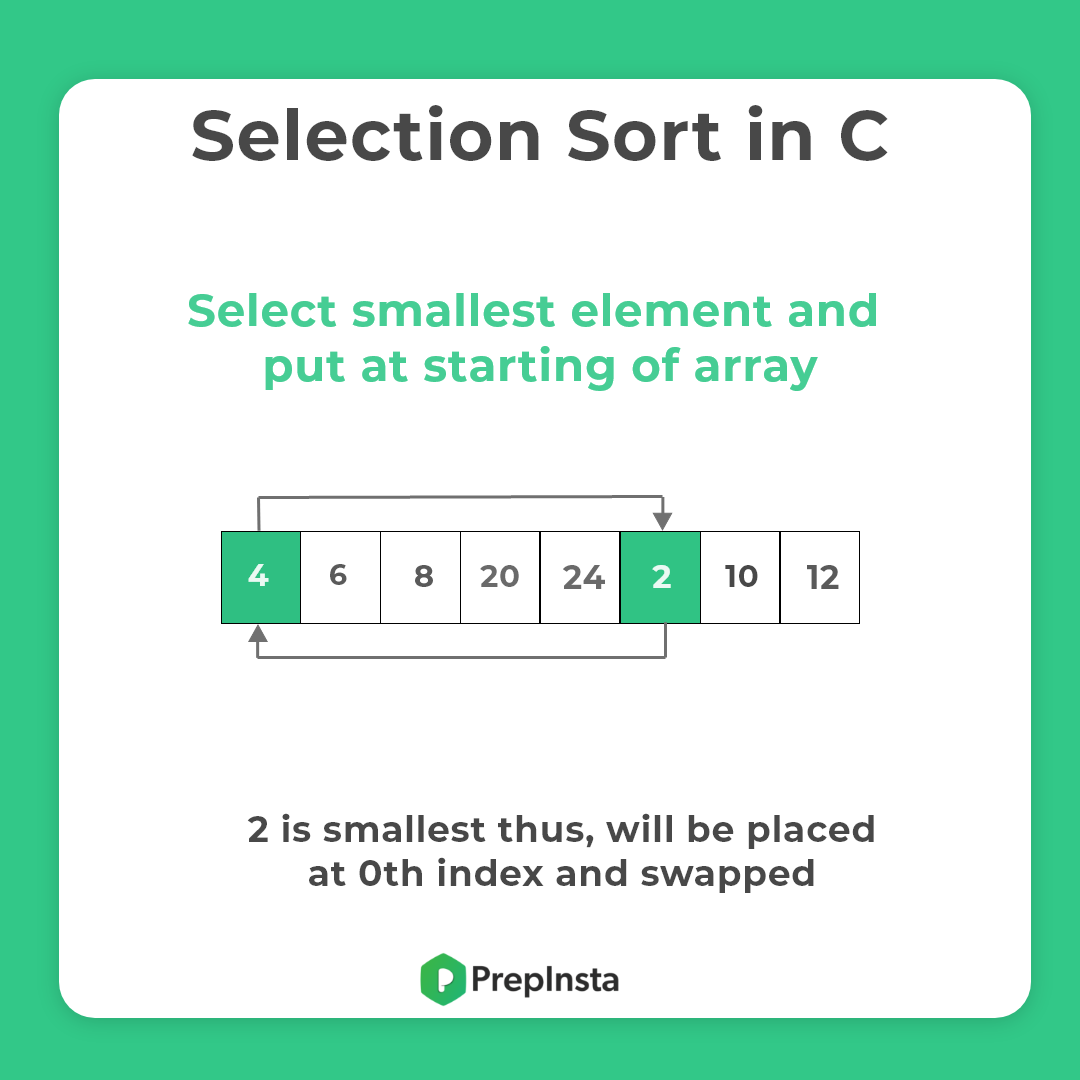C Menu
- Basics of C
- Basics of C Programming
- Features of C Programming
- Preprocessors in C Programming
- History of C Programming
- Low Level Programming
- Why C is Middle Level Language
- Introduction to C programming
- Structure of a C program
- Input-Output Functions
- Difference between Compiler and Interpreter
- Assembler v/s Compiler v/s Interpreter v/s Linker v/s Loader
- Basics to Code
- Operators in C
- Operators in C
- Precedence Associativity Operators
- Arithmetic Operators
- Relational Operators
- Logical Operators
- Bitwise Operators
- Assignment Operators
- Ternary Operators in C
- Size of Operators
- Conditional Operators
- Comma Operators
- Format Specifiers in C
- Difference between %d and %i
- Difference between %f, %e, %E and %g
- How to print% using printf
- How to print \ using printf
- How to print “” using printf
- What is the use of %p in C
- Library Functions in C
- pow() in C
- sqrt() in C
- Storage Classes in C
- Conditional statements and Decision Making in C
- DataType & Functions in C
- Arrays, String, Structure, Union and Enum
- Pointer in C
- Library Function in C
- Library function in C
- math.h in c
- Library function math.h acos
- Library function math.h acosh
- Library function math.h asin
- Library function math.h asinh
- Library function math.h atan
- Library function math.h atan2
- Library function math.h atanh
- Library function math.h cbrt
- Library function math.h cell
- Library function math.h cos
- Library function math.h cosh
- Library function math.h exp
- Library function math.h fabs
- Library function math.h floor
- Library function math.h hypot
- Library function math.h log
- Library function math.h log10
- Library function math.h pow
- Library function math.h sin
- Library function math.h sinh
- Library function math.h sqrt
- Library function math.h tan
- Library function math.h tanh
- Library function studio.h clearerr
- Library function string.h strcat
- Library function string.h strcmp
- Library function string.h strcpy
- Library function string.h strlen
- File Handling
- Dynamic Memory Allocation
- Miscellaneous Topics in C
- Miscellaneous Coding Questions
PREPINSTA PRIME
Selection Sort in C
What is Selection Sort in C
In this Sorting technique the list is divided into two parts. first one is left end and second one is right end . The selection Sort is very simple sorting algorithm.
| Time Complexity (Best) | Ω(n2) |
| Time Complexity (Avg) | Θ(n2) |
| Time Complexity (Worst) | O(n2) |
| Space Complexity | O(1) |

Steps for Selection Sort in C
There are following Step of selection sort algorithm.
- Step 1-Select the smallest value in the list.
- Step 2-Swap smallest value with the first element of the list.
- Step 3-Again select the smallest value in the list (exclude first value).
- Step 4- Repeat above step for (n-1) elements untill the list is sorted.

Implementation of Selection Sort
- We have been given a unsorted array. which we’ll make a sorted array using selection sort. first of all find the smallest value in the array and then swap smallest value with the starting value.
- According to the below image, 8 is smallest value in this array so 8 is swapped with the first element that is 72.
- Similarly, in the next iteration we’ll find the next smallest value, excluding the starting value so in this array 10 is second smallest value, which is to be swapped with 50.
- These iteration will continue until we have the largest element to the right most end, along with all the other elements in their correct position.
- And then we can finally say that the given array is converted in sorted array.

Code of Selection sort in C
// C program for implementation of selection sort
// Time Complexity : O(N^2)
// Space Complexity : O(1)
// Best, Avg, Worst Cases : All of them O(N^2)
#include<stdio.h>
/* Display function to print values */
void display(int array[], int size)
{
int i;
for (i=0; i < size; i++)
printf("%d ",array[i]);
printf("\n");
}
// The main function to drive other functions
int main()
{
int array[] = {72, 50, 10, 44, 8, 20};
int size = sizeof(array)/sizeof(array[0]);
printf("Before sorting: \n");
display(array, size);
int i, j, min_idx,temp;
// Loop to iterate on array
for (i = 0; i < size-1; i++)
{
// Here we try to find the min element in array
min_idx = i;
for (j = i+1; j < size; j++){
if (array[j] < array[min_idx])
min_idx = j;
}
// Here we interchange the min element with first one
temp = array[min_idx];
array[min_idx] = array[i];
array[i] = temp;
}
printf("\nAfter sorting: \n");
display(array, size);
return 0;
}// C program for implementation of selection sort
// Time Complexity : O(N^2)
// Space Complexity : O(1)
// Best, Avg, Worst Cases : All of them O(N^2)
// C program for implementation of selection sort
#include<stdio.h>
// function to swap item using pointers
void swap(int *xp, int *yp)
{
int temp = *xp;
*xp = *yp;
*yp = temp;
}
void selectionSort(int array[], int size)
{
int i, j, min_idx;
// Loop to iterate on array
for (i = 0; i < size-1; i++)
{
// Here we try to find the min element in array
min_idx = i;
for (j = i+1; j < size; j++)
{
if (array[j] < array[min_idx])
min_idx = j;
}
// Here we interchange the min element with first one
swap(&array[min_idx], &array[i]);
}
}
/* Display function to print values */
void display(int array[], int size)
{
int i;
for (i=0; i < size; i++)
printf("%d ",array[i]);
printf("\n");
}
// The main function to drive other functions
int main()
{
int array[] = {72, 50, 10, 44, 8, 20};
int size = sizeof(array)/sizeof(array[0]);
printf("Before sorting: \n");
display(array, size);
selectionSort(array, size);
printf("\nAfter sorting: \n");
display(array, size);
return 0;
}Output
Before sorting:
72 50 10 44 8 20
After sorting:
8 10 20 44 50 72
Performance
The Selection Sort best and worst case scenarios both follow the time complexity format O(n^2) as the sorting operation involves two nested loops. The size of the array again affects the performance.[1]
Strengths
- The arrangement of elements does not affect its performance.
- Uses fewer operations, so where data movement is costly it is more economical
Weaknesses
- The comparisons within unsorted arrays requires O(n^2) which is ideal where n is small


Time Complexity
For Selection Sort
Best
Ω(n2)
Average
Θ(n2)
Worst
O(n2)
Space Complexity
O(1)

Question 1. Array = [10, 11, 12, 13, 14, 15], the number of iterations bubble sort(without flag variable) and Selection sort would take –
- 5 and 5
- 5 and 4
- 4 and 4
- 6 and 6
(Cognizant – Mettl Test)
In bubble sort they are talking about passes, even though the question says iterations.
A bubble sort with n items takes (n-1) passes.
In selection sort also for n items its (n-1) passes.
Thus, 4 and 4 is answer
Option C

Question 2. Array = [10, 11, 12, 13, 14, 15], the number of iterations bubble sort(with flag variable) and Selection sort would take –
- 5 and 5
- 5 and 4
- 4 and 4
- 1 and 4
(Cognizant – Mettl Test)
In bubble sort they are talking about passes, even though the question says iterations.
A bubble sort with n items takes (n-1) passes. But, since the whole array is sorted, bubble sort will have just one pass to realize the array is sorted and abandon other passes
In selection sort also for n items its (n-1) passes, even though the array is sorted
Thus, 1 and 4 is answer
Option C

Question 3. What is the best case complexity of selection sort?
- O(nlogn)
- O(logn)
- O(n)
- O(n2)
(Wipro – AMCAT Test)
In selection sort all cases the time complexity is : O(N^2)
Explanation: The best, average and worst case complexities of selection sort is O(n2).
(n-1) + (n-2) + (n-3) + …. + 1 = (n(n-1))/2 ~ (n2)/2.

Question 4. Array[] = {72, 50, 10, 44, 8, 20} how would the array look like in iteration 4
- 8, 10, 44, 20, 72, 50
- 8, 10, 20, 44, 72, 50
- 8, 10, 20, 44, 50, 72
- None
(Wipro – AMCAT Test)
Answer : B
The array will look like – 8, 10, 20, 44, 72, 50
Check image

Sorting
Sorting algorithms are easy to learn but are really important for college semester exams and companies offering package between 3 – 6 LPA would ask direct searching questions in online test/ interviews.


 Apply For Jobs
Apply For Jobs Get Hiring Updates
Get Hiring Updates


Login/Signup to comment